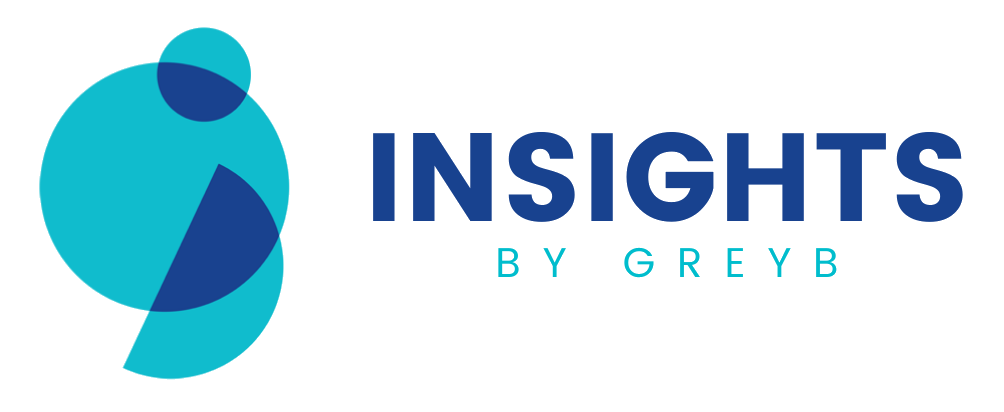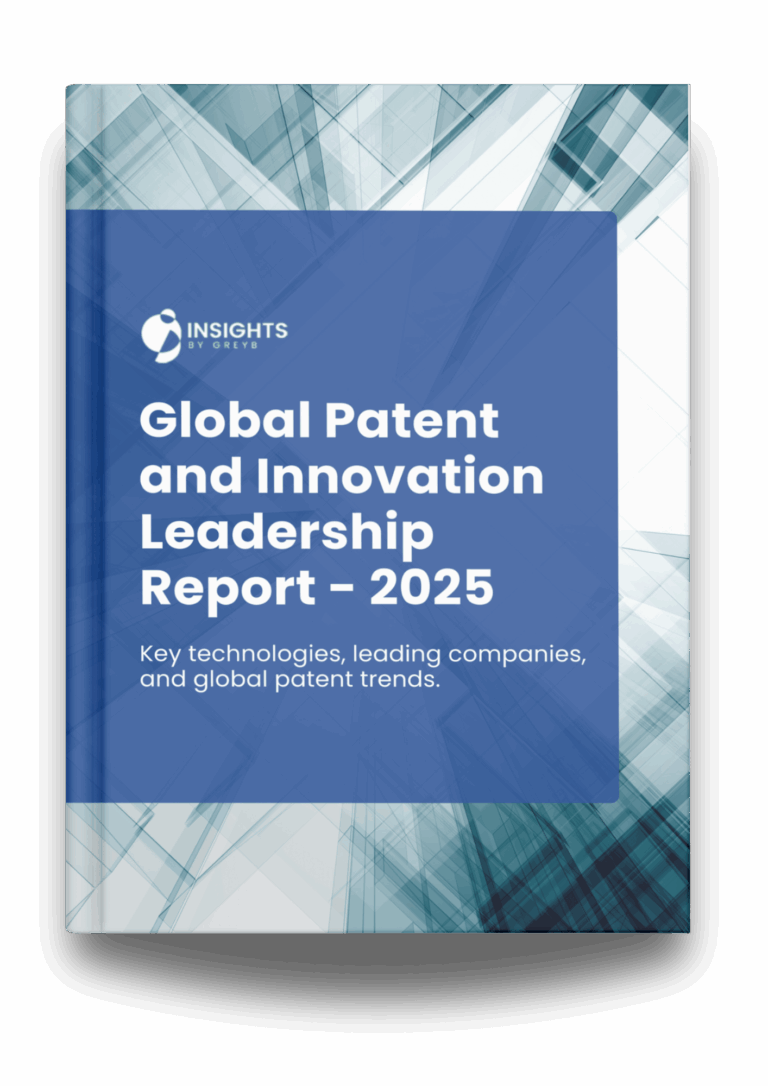The promise of 5G extends far beyond faster download speeds—it’s about enabling intelligent, real-time interactions across industries. However, as data volumes surge, relying solely on centralized cloud infrastructure creates bottlenecks, increasing latency and straining network performance. Edge Computing addresses this challenge by decentralizing data processing, bringing computation closer to the user, device, or application. This shift is crucial for unlocking the full potential of 5G in latency-sensitive applications like autonomous vehicles, smart cities, and industrial automation.
With 5G set to revolutionize connectivity, Edge Computing serves as its backbone, ensuring networks can handle the demands of real-time decision-making and ultra-low-latency communication. As industries integrate Edge Computing into their 5G ecosystems, patents play a critical role in defining its technological evolution. Analyzing patent trends in this space provides valuable insights into the innovations shaping the next generation of 5G-powered Edge Computing and the opportunities they bring for businesses and technology leaders alike.
Edge computing is redefining 5G with ultra-low latency and intelligent processing. Explore the latest ETSI-declared 5G patents shaping next-gen telecom
Which Companies Are Leading in Declaring 5G Edge Computing Core SEPs and Their Patent Legal Status?
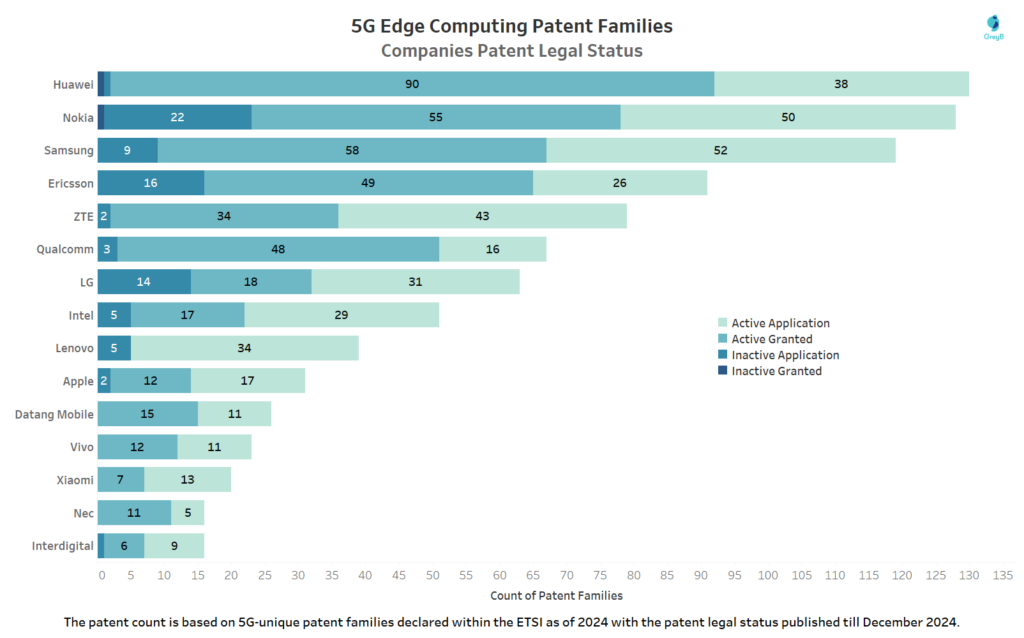
Huawei leads in 5G edge computing patents with highest number of active granted ones. Nokia, Samsung, and Ericsson balance granted and active applications. Notably, Datang Mobile, Vivo, and Xiaomi and NEC maintain 100% active portfolios, reflecting strategic patent protection. With China dominating patent filings, followed by the US, Europe, and South Korea, the global 5G edge computing patent race is intensifying.
What Are the Declaration Year Trends for 5G Edge Computing Patent Families in ETSI Data?
This chart illustrates the yearly trends in 5G Edge Computing SEPs submitted to ETSI, highlighting the progression of Edge Computing-related advancements in the 5G ecosystem.
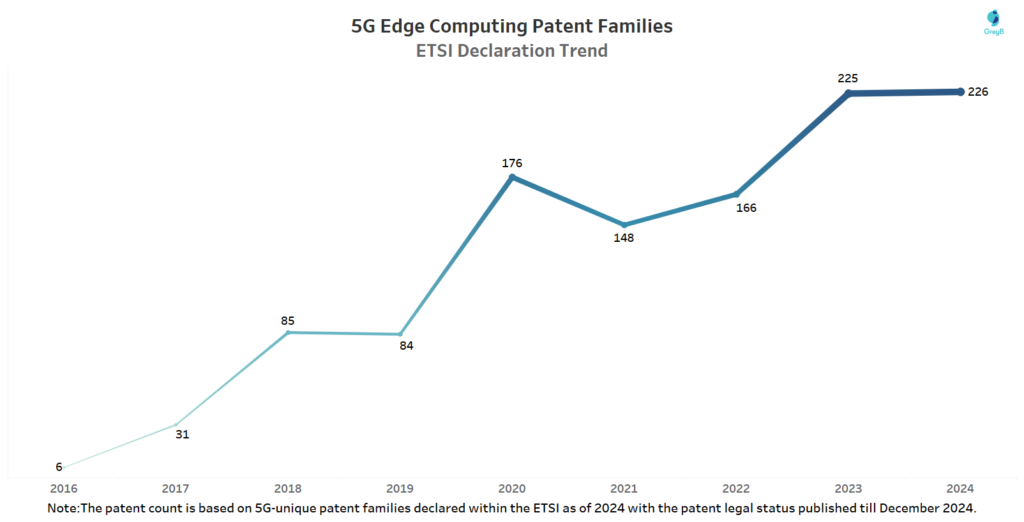
Which 3GPP Specifications Have the Most 5G Edge Computing Patent Families Declared by ETSI?
The 3GPP specification numbers (TGPP Number) serve as vital identifiers within the technical standards developed by the 3rd Generation Partnership Project (3GPP), enabling the seamless integration of mobile network technologies, including 5G. These numbers correspond to specific features or technologies, such as Edge Computing, and play a pivotal role in mapping patents declared as 5G-related in the ETSI dataset. By linking patents to their relevant 3GPP specifications, this dataset provides valuable insights into the focus areas of innovation within Edge Computing technology.
| TGPP Number | 5G Edge Computing Patent Families | 3GPP Specification |
| 38.331 | 150 | NR; Radio Resource Control (RRC); Protocol specification |
| 23.501 | 118 | System architecture for the 5G System (5GS) |
| 23.558 | 107 | Architecture for enabling Edge Applications |
| 38.213 | 95 | NR; Physical layer procedures for control |
| 38.212 | 85 | NR; Multiplexing and channel coding |
| 38.211 | 84 | NR; Physical channels and modulation |
| 38.214 | 58 | NR; Physical layer procedures for data |
| 23.502 | 54 | Procedures for the 5G System (5GS) |
| 38.3 | 47 | NR; NR and NG-RAN Overall description; Stage-2 |
| 23.548 | 45 | 5G System Enhancements for Edge Computing; Stage 2 |
| 33.501 | 39 | Security architecture and procedures for 5G System |
| 38.321 | 37 | NR; Medium Access Control (MAC) protocol specification |
| 24.501 | 21 | Non-Access-Stratum (NAS) protocol for 5G System (5GS); Stage 3 |
| 38.133 | 19 | NR; Requirements for support of radio resource management |
| 28.54 | 16 | Management and orchestration; 5G Network Resource Model (NRM); Stage 1 |
Which Companies Lead in 5G Edge Computing Patent Families Share in the Top 5 Countries?
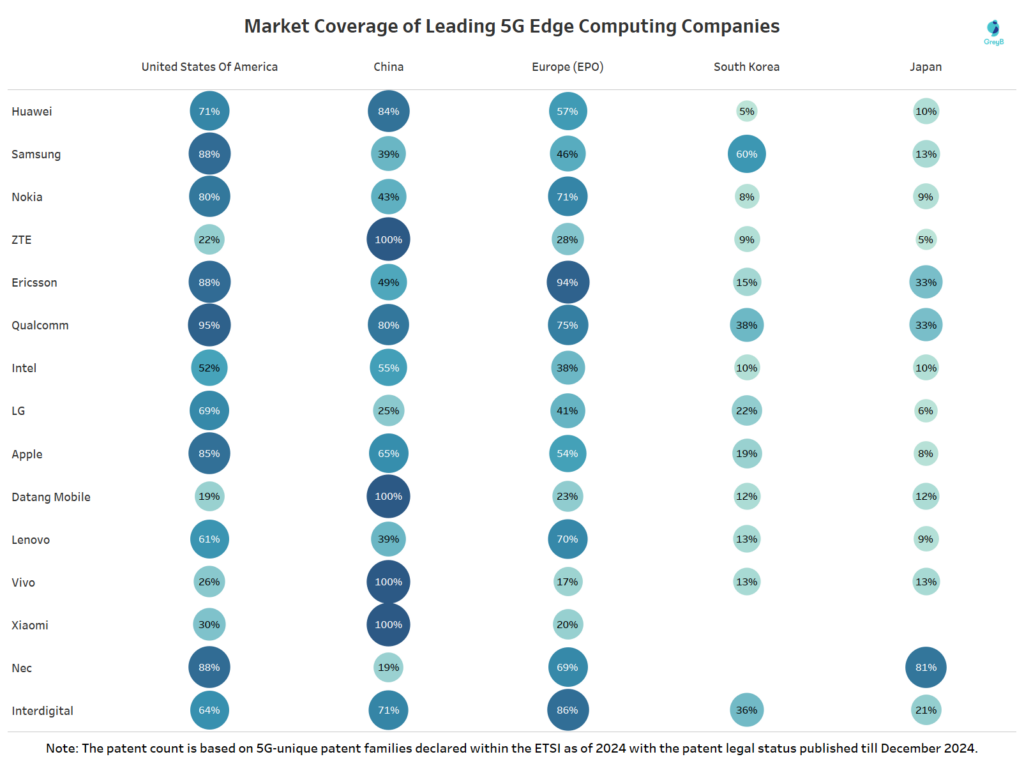
The U.S. remains the dominant 5G edge computing patent hub, with Qualcomm, Samsung, and Ericsson leading filings. China’s market is driven by local giants like ZTE and Huawei, while Europe balances global and regional players. South Korea sees Samsung’s dominance, and Japan emerges as a strategic IP market for global firms. With patent filings shaping the future of 5G infrastructure, companies are securing IP rights to lead in the next wave of telecom innovation.
Top Companies Leading 5G Edge Computing Patent Families Share in the USA
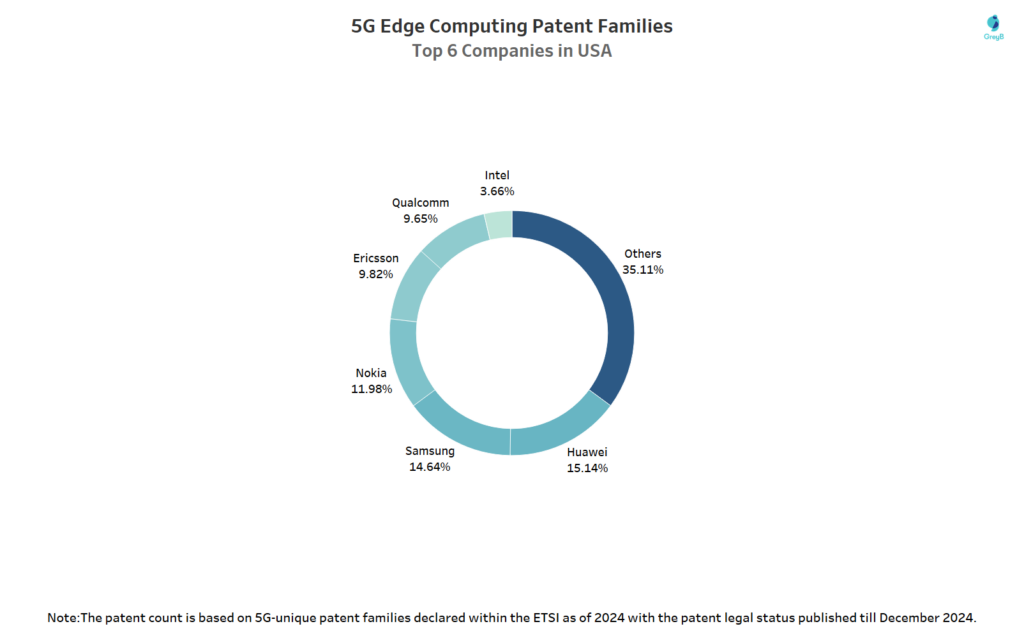
Huawei leads in 5G edge computing patents in the U.S. (15.14%), while Samsung (14.64%) and Nokia (11.98%) maintain strong positions. Ericsson and Qualcomm closely compete, likely focusing on telecom and chipset technologies. With 35% of patents held by smaller players, the U.S. market remains highly competitive, signaling rapid innovation beyond the industry giants.
Leading Companies in 5G Edge Computing Patent Families across Europe (EPO)
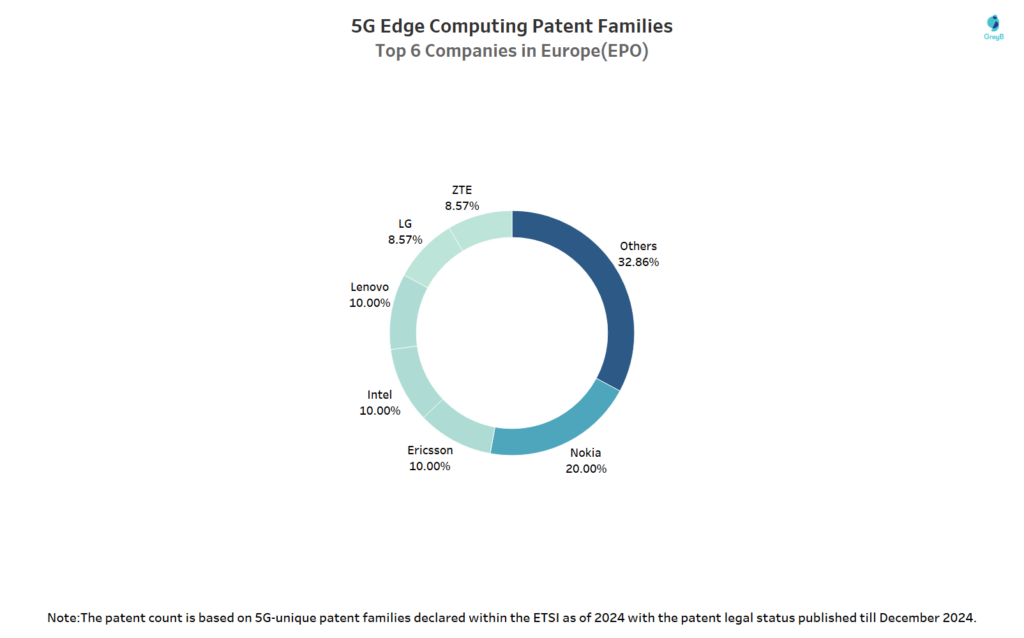
Nokia leads 5G edge computing patent filings in Europe (20%), while Ericsson, Intel and Lenovo each hold 10%, reflecting diverse innovation. LG (8.57%) and ZTE (8.57%) highlight Asia’s growing influence in European 5G markets. With one-third of patents filed by smaller players, Europe remains a highly competitive and fragmented landscape, fostering innovation across multiple industry verticals.
Key Players in China’s 5G Edge Computing Patent Families Share
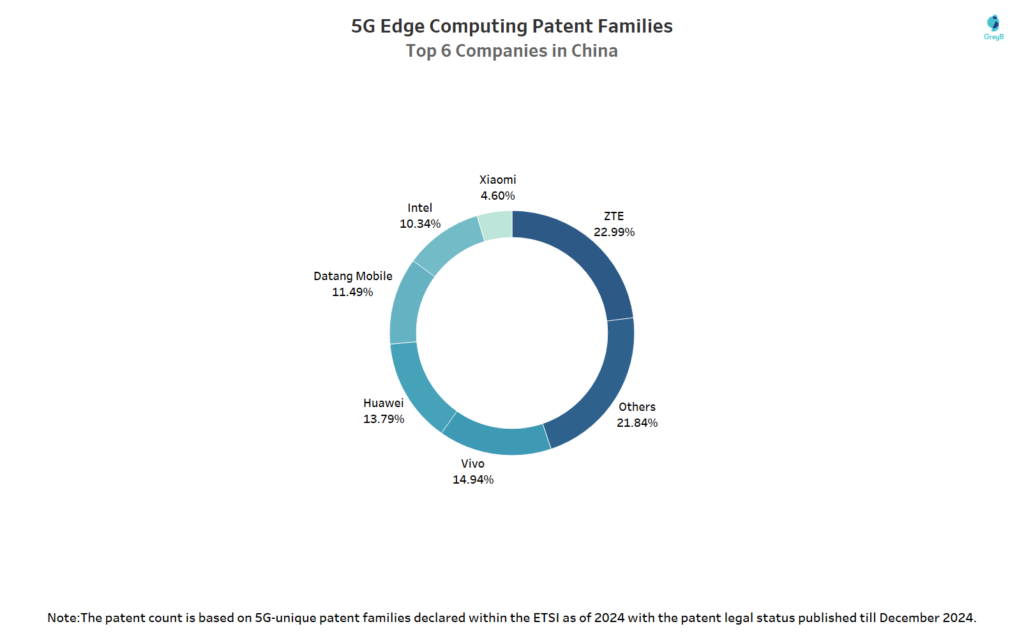
ZTE dominates 5G edge computing patents in China (22.99%), while Vivo (14.94%) surpasses Huawei (13.79%), signaling a shift in innovation leadership. Datang Mobile (11.49%) strengthens China’s telecom backbone, while Intel (10.34%) is the only foreign contender. With over 21% of patents held by smaller players, China’s 5G edge computing landscape remains highly dynamic and competitive.
Methodology
This report is based on a detailed analysis of patents and applications declared essential to the 5G standard as of 2024, listed in the ETSI 5G Declaration List. It focuses exclusively on 5G-specific technologies identified through the 3GPP portal, consolidating 4,22,827 patent documents into 84,940 patent families for a clear view of the innovation landscape. For identifying Edge Computing SEPs declared to ETSI, we have relied on search queries to capture the patent families related to Edge Computing technology.
Exploring the Edge Computing in 5G patent landscape? Get a detailed report on key Edge Computing technology in 5G patents declared under the ETSI framework. Stay ahead with insights into essential filings, patent trends and competitive positioning. Fill out the form below to access expert-driven analysis.
